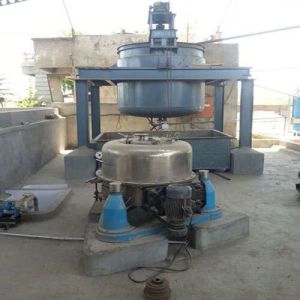
Zinc Sulphate Plant
13,000,000 Per number
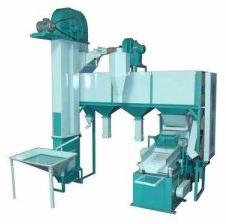
Zinc Sulphate Hepta Hydrate Plants
14,000,000 Per Piece
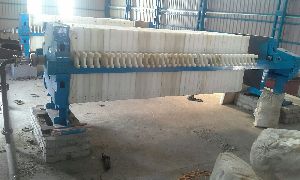
Zinc Sulphate Hepta Hydrate Plant
1 Piece(s) (MOQ)
Zinc Sulphate is a white, fine crystal or a pearl shaped product. It is prime nutrient for plants. This micro-nutrient is primarily used in maintaining normal health and increased yields, The Zinc Sulphate is applied directly to the crops. It is also blended with other Fertilisers like SSP / GSSP/Urea and other fertilizers as it is required by plants in small quantity. We specialize in manufacturing Zinc Sulphate Plants. The design of the plant is result of years and enterprise and research. These cost-effective plants are known for reliable performance and higher production capacity. Process Description Zinc Sulphate is manufactured by the reaction of Zinc ash with Sulphuric acid. The Sulphuric Acid is diluted to 65-70% with recycle water / wash water & fresh water. The acid is neutralized with Zn ash. The reaction mass is agitated continuously. The hydrogen gas is released. As the reaction is complete the reaction mass is filtered through filter press. The filtrate temperature is 60 to 70 degree Celsius. This temperature cooled down to 20 to 180C with normal / chilled water. Crystalline Solid is Centrifuged to remove any surface water. The Zinc Sulphate Hepta hydrate is than packed in 1 kg , 2 Kg. 5Kg and 10 kg packs. Some of the major components of Zinc Sulphate Plants are : Reactors Rubber Lined & AHR Mild Steel Tanks Pumps Filter Press Crystallisers Chilling Plant Compressors Mild Steel Storage Tanks Centrifuge Mud Washer Pollution control system. We provide our client a complete solution by undertaking projects for Zinc Sulphate Plants on turnkey basis. Our engineers work closely with each client right from concept to commissioning of the plants. We also provide expert technical support and after-sale services to ensure flawless operation of the installed plant.
Condition : New
...more
Triple Super Phosphate Granulation Plant
1 Piece(s) (MOQ)
TSP (Triple Super Phosphate) represented as 0-46-0, is normally applied where plants are grown in soils with low or average levels of phosphorus. Its importance can be measured by the fact that in absence or it, the root development is weak, growth is stunted, and productivity drops, the leaves or the edges of the leaves turn purple and in plants like tobacco and cotton, the leaves turn an abnormal colour of dark green; potato tubers develop brown spots etc.
...more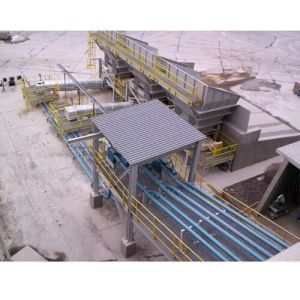
Synthetic Gypsum Plant
13,000,000 Per number
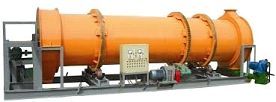
Rotary Dryer
1 Piece(s) (MOQ)
Voltage : 110V
Condition : New
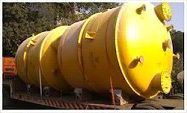
Reaction Tanks
1 Piece(s) (MOQ)
Material : Metal

Phospho Gypsum Granulation Plant
1 Piece(s) (MOQ)
Voltage : 110V
Condition : New
Automatic Grade : Automatic & Semi-Automatic
...more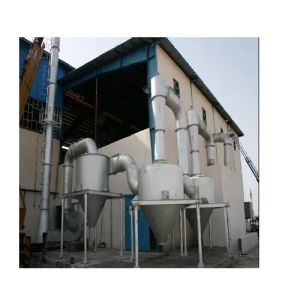
Phosphate Fertilizer Plant
25,000,000 Per Piece
Material : MS,CS,GI,Cu,Gun Metal, Neoprene Rubber
Capacity : 50-1200 tons per day unit
Country of Origin : Made in India
...more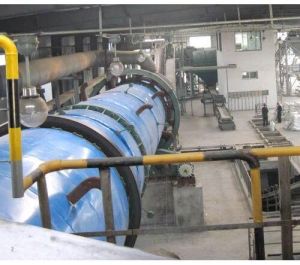
NPK Mixture Granulation Plant
15,000,000 Per number
Country of Origin : Made in India
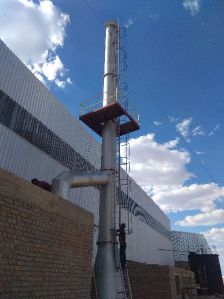
NPK Granulation Plant
1 Piece(s) (MOQ)
All our NPK production plants are competitively priced, and can be customized to meet the specific demands of the customers. The integrated design allow proper maintenance and cleaning. The dust in the system can be separated with cyclones and scrubbed with water. High production capacity, consistent performance and low energy consumption, option of using different fuels further makes our NPK production lines - the preferred choice of leading players in the fertilizer industry. Manufacturing Process The raw materials like Urea, DAP, SSP, TSP, Murate of Potash and fillers are fed to the weigh belts conveyors where they are weighed in specific quantities for the grade and moved to Mixer for producing homogenous mixture. The material is mixed with the recycle material and taken for granulation in granulation drum where the partial granulation is achieved with very fine jet of water spray at the rotating granules. The fine powder gets deposited on a small nuclei. This process can be controlled to produce particle size as per the demand of the customers. The material is taken to dryer drum where hot air generated in the furnace is passed through it. The raw material having low melting points easily melts and gets deposited on the nuclei. The high temperature evaporates water and the material is air dried. Further, the material is cooled by blowing ambient air through it in cooler drum. The 1 – 4 mm or desired size homogenous granules are obtained using vibrating screens. The product, screened granules of uniform size are precisely packed in bag. The oversize material (after crushing) and undersize are recycled. Components of NPK Production Line Weighing & Blending System, Belt conveyor, Furnace, Rotary drum granulator, Rotary dryer, Rotary cooler, Rotary coating machine, Packing machine, Cyclones & dust collector, Vibrating screen, Bucket elevator, Scrubbers etc.
...more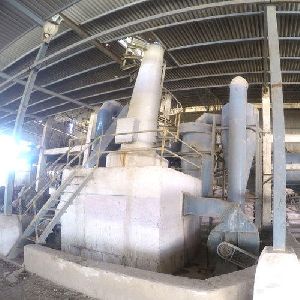
Monocalcium Phosphate Plant
1 Piece(s) (MOQ)
Monocalcium phosphate is used in food product as a leavening agent. MCP process requires defluorinated phosphoric acid and calcium carbonate as caco3 to react with pre-mixer and mixer. MCP is sparingly soluble in water, the maximum solubility being 1.8% wt. /vol at 25°C, However, MCP has significantly higher solubility in phosphoric acid solution and the saturation solubility is related to available P205 % in the acid. Plants based on following raw material: Based on phosphoric acid & calcium carbonate Based on sulphuric acid & rock phosphate to produce phosphoric acid Process Description: The first step in this process is in the production of single super phosphate generally known as SSP, triple super phosphate (TSP) a well known fertilizer and a super phosphate of a grade between SSP and TSP. Tri calcium phosphate present in rock phosphate or any other natural sources of phosphates on treatment with sulphuric acid or phosphoric acid gets converted into mono calcium phosphate according to the following reaction. Mono calcium phosphate produced is still contaminated with fluorides. This product obtained is known as green super in the industry and has a very high unreacted free acid content. Green super on keeping gets cured and the unreacted free acid as well as the excess of phosphoric acid formed during the reaction and the unreacted calcium phosphate present therein slowly react with each other to yield of mono calcium phosphate. Soluble fluoride content of this product depends on the available free acid when cured fully, single super phosphate contains approximately 1.2 to 2.2% of free acid content. This fully cured product is treated with water or recycle liquor from a subsequent process step to dissolve mono calcium phosphate present therein. Solid impurities are separated and the filtrate containing free acid is treated with a solution of hydrated lime to increase its pH and to precipitate out impurities such as iron, aluminium and fluorine containing compounds. Mono calcium phosphate solution free from such contaminants is further treated with a solution of hydrated lime to neutralize and to produce di calcium phosphate free o£ fluoride ions. If required a mixture of mono and di calcium phosphate may also be produced by adjusting the quantity of hydrated lime. This product is found to have at least 18% or more P than normal di calcium phosphate and exhibits higher digestibility when used as a feed additive. This invention relates to a process for the preparation of feed grade di calcium phosphate substantially free of fluorides from a source containing mono calcium phosphate such as simple super phosphate, concentrated super phosphate or fertilizer grade phosphate which comprises the steps of (a) leaching out soluble mono calcium phosphate therefrom with water or recycle wash water from at least one subsequent steps, (b) adding a first quantity of a solution of hydrated lime thereto to precipitate and separate contaminants like iron, aluminium and fluorine containing compounds therefrom (c) adding a further quantity of hydrated lime to the filtrate containing mono calcium phosphate to produce di calcium phosphate as precipitate which is separated washed and dried, wash water from steps (b) and (c) being recycled to step (a) to leach out further mono calcium phosphate. Some of the major components of Monocalcium Phosphate (MCP) Plants are: For MCP Process Grinding Unit Material Handling Equipment Reactor Nutsche Filter Collection Tank (Cn-pa & W-pa) Mixing Tank Agitators Filter Press / Centrifuge Electric Dryer Oven (Tray Type) Air Compressor Pumps Acid Storage Tank Hopper Packing Unit Pollution Control Unit
Application : Agri Field
Voltage : 110V
Condition : New
...more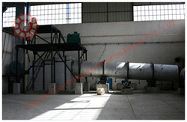
Mineral Gypsum Granulation Plant
1 Piece(s) (MOQ)
With thorough expertise and understanding of this industry, we are enormously involved in offering Mineral Gypsum Granulation Plant. The Mineral Gypsum or Phospho Gypsum is screened for lumps. The lumps are crushed fine. The powder is mixed with the binder and hardener and transferred to the granulator. In the granulation drum a very fine spray of water is done on rolling material at its angle of repose. Some coating of powder over the small nuclei / particles takes place. The size of granules are controlled as more spray, bigger granule. Less spray small granule. This duration of this process is controlled as per requirement. The material is then taken to dryer drum where the hot air generated in the furnace is passed through it. The dried material is cooled in cooler drum by passing ambient air through it. The ID fans connected to dryer & cooler sucks air from the drums so some dust also comes with it. The dust is separated in the cyclones and finally scrubbed in wet scrubber. The cooled material is screened through under size & over size screens. The product of 1 – 4 mm size is separated and packed in 50 kg. Bags. The oversize material after crushing and the under size are recycled and work as nucleus for next cycle.
Voltage : 110V
Condition : New
Automatic Grade : Automatic & Semi-Automatic
...more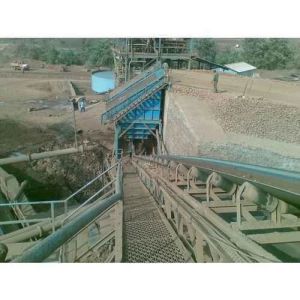
Mineral Beneficiation Plant
15,000,000 Per number
Automatic Grade : Semi-Automatic
Power : 5.5 kW
Weight : 1640 Kg
Voltage : 380 V
Capacity : 6-10 Ton / h, 99%
...more
Magnesium Sulphate Plant
1 Piece(s) (MOQ)
Type : Magnesium Sulphate
Color : Blue

Gypsum Granulation Plant
1 Piece(s) (MOQ)
The Mineral Gypsum or Phosphors Gypsum is Screened for lumps. The lumps are crushed fine. The powder is mixed with the binder and hardener and transferred to the granulator. In the granulation drum a very fine spray of water is done on rolling material at its angle of repose. Some coating of powder over the small nuclei / particles takes place. The size of granules are controlled as More spray, bigger granule. Less spray small granule. This duration of this process is controlled as per requirement. The material is then taken to dryer drum where the hot air generated in the furnace is passed through it. The dried material is cooled in cooler drum by passing ambient air through it . The ID fans connected to dryer & cooler sucks air from the drums so some dust also comes with it. The dust is separated in the cyclones and finally scrubbed in wet scrubber. The cooled material is screened through under size & over size screens. The product of 1 – 4 mm size is separated and packed in 50 kg. bags. The oversize material after crushing and the under size are recycled and work as nucleus for next cycle .
...more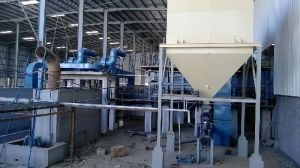
Granulated Single Super Phosphate Plant
1 Piece(s) (MOQ)
The use of granulated product is more beneficial than the use of powder. The powder get dissolved immediately in irrigation water and becomes readily available. Some part of it is used by plants and balance goes to sub soil with water and remain useless. The powder can be used only during sowing of seeds. It cannot be used on the growing crops as it get deposited on the leaves of the plants and being slightly acidic, burns them. The granulated product rolls down the plant and can be used harmlessly on the standing crops. The biggest advantage in using the granulated product is that it is available to the crops for a longer time because it get dissolved slowly in water. Process Description The cured Single Super Phosphate is Screened. The powder is taken directly and the lumps are taken after crushing, for granulation . The soil conditioner gypsum is a added . The material is taken to granulation drum where very fine spray of water is done on rolling material at its angle of repose. Some coating of powder over the small nuclei / particles takes place. This duration of this process is controlled as per requirement. The material is then taken to dryer drum where the hot air generated in the furnace is passed through it. The material is cooled in cooler drum by passing ambient air through it. The ID fans connected to dryer & cooler sucks air from the drums so some dust also comes with it. The dust is separated in the cyclones and finally scrubbed in wet scrubber. The cooled material is screened through under size & over size screens. The product of 1 - 4 mm size is separated and precisely packed. The oversize material after crushing and the under size are recycled and work as nucleus for next cycle . Major Components of Granulated Single Super Phosphate Manufacturing Plant Conveyor Belts Rotary drum granulator Hot Air Generator Rotary dryer Rotary Cooler Vibrating Screens Weighing machine Packaging machine Super Phosphate Storage Pile Conventional Scrubbers GSSP Product Hopper We specialize in providing turnkey solution for Granulated Single Super Phosphate Plant. Our engineers can provide custom engineered manufacturing units with required modifications. We also offer excellent after-sales and maintenance services for installed plants.
...more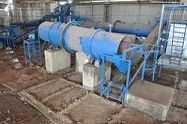
Ferrous Sulphate Plant
1 Piece(s) (MOQ)
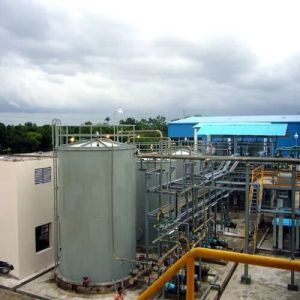
Ferric Alum Plant
16,500,000 Per Piece
Design Type : Standard

Dicalcium Phosphate Plant
1 Piece(s) (MOQ)
Dicalcium phosphate is used as animal feed and ip grade. The plant uses phosphoric acid and calcium oxide or calcium carbonate as raw materials. Phosphoric acid and calcium carbonate are first reacted together with water, then fed to the updraft of the combustor where the reaction is finished and drying begins. The drying is coming from the reaction heat. No dryer is needed. It dries, sieves and mills dcp product to desired size. Secondly dcp will made by single super phosphate(ssp) it direct reaction with sulphuric acid and powder rock phosphate Plants based on following raw material : Based on sulphuric acid , rock phosphate & lime. Based on hydrochloric acid Based on phosphoric acid Based on single super phosphate(ssp) Manufacturing of dicalcium phosphate process are of two types , first is direct phosphoric acid with calcium oxide reaction and second is based on the reaction with sulphuric acid and rock phosphate powder to produce single super phosphate. If we use phosphoric acid for dcp production than first we make phosphoric acid with sulphuric acid 98%, ground rock phosphate 28-30% and water filter the react material by neutsche filter to separate the phosphoric acid and gypsum. Concentrate deflourinated phosphoric acid collected in mixing tank to mix lime solution with agitator. After complete reaction in mixing tank than precipitated dcp material do the filtration with filter press to separate the dcp wet cake and neutral solution. Filtrate dcp wet cake put in to the electric oven in tray and dry it 2-3 hour to remove the moisture after drying remove from oven dcp material to pack into the bag with packing in 2,5,10,20,50 kg weight. Secondly dcp process through single super phosphate (ssp) powder than to make single super phosphate with reaction of sulphuric acid 98% and rock phosphate powder 28-30% in paddle mixer and den conveyor , that’s are green ssp to put for curing to complete reaction in heap for one weak . Cured ssp powder and water to take in mixing tank to mix with agitator after completion of mixing to separate solution and gypsum through neutsche filter / filter press / filter belt conveyor , filtered solution to collect in and other mixing tank to mix lime solution with agitator maintained ph 6.5-7.0 . After completion of mixing same procedure for both process as above as filtration, drying and packing Some of the major components of dicalcium phosphate (dcp) plants are: For DCP phosphoric acid process & lime process Grinding unit Material handling equipment Reactor Nutsche filter Collection tank (cn-pa & w-pa) Mixing tank Lime solution tank Agitators Filter press / centrifuge Electric dryer oven (tray type) Air compressor Pumps Acid storage tank Hopper Packing unit Pollution control unit For DCP with single super phoshate (ssp) Grinding unit Matreial handling equipment Paddle mixer Den conveyor with rp den & cutter Ssp mixing tank with agitator Nutsche filter Lime mixing tank Lime solution tank Agitator Filter press Electric dryer oven (tray type) Air copressor Pumps Acid storage tank Hopper Packing unit Pollution control unit
Voltage : 110V
Condition : New
Power : 1-3kw
...moreOpening Hours